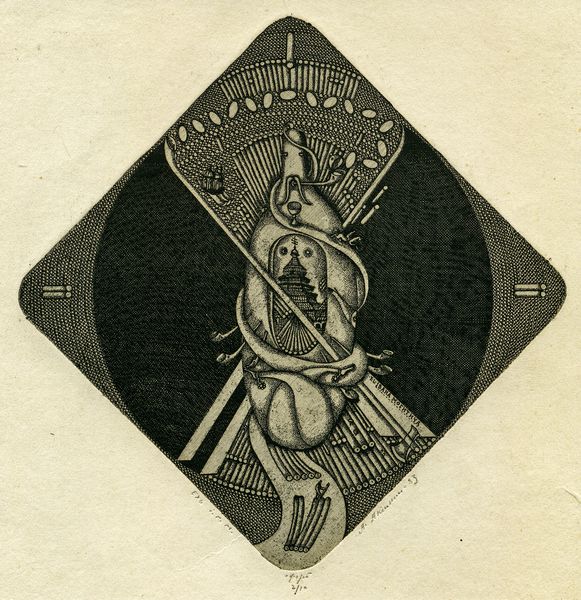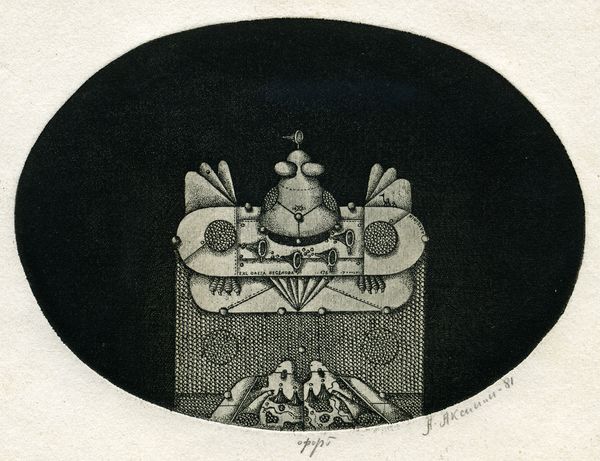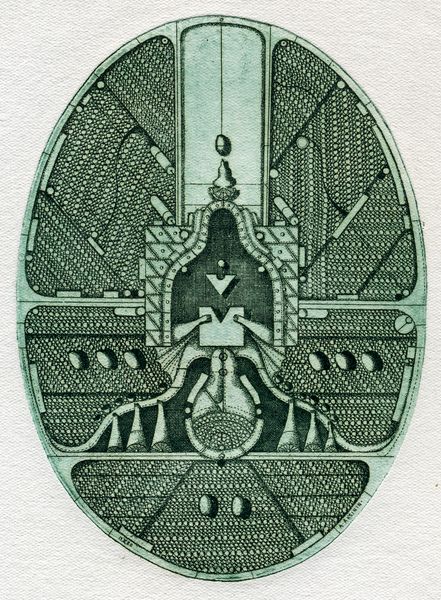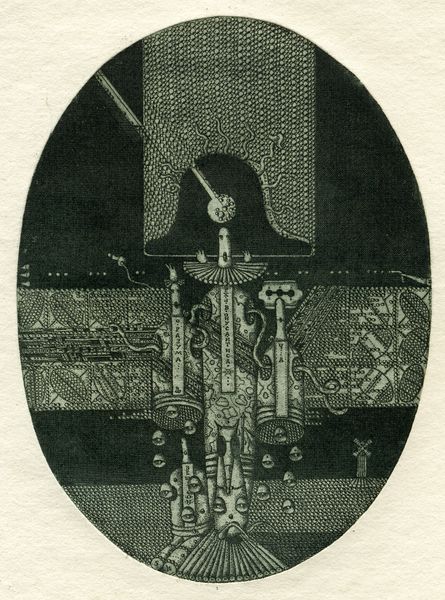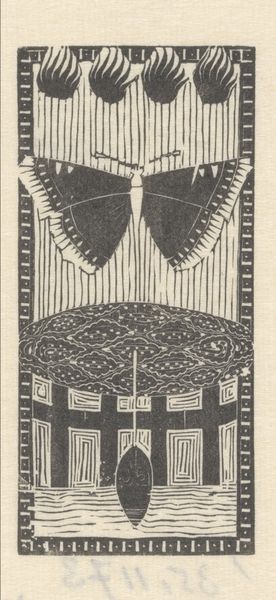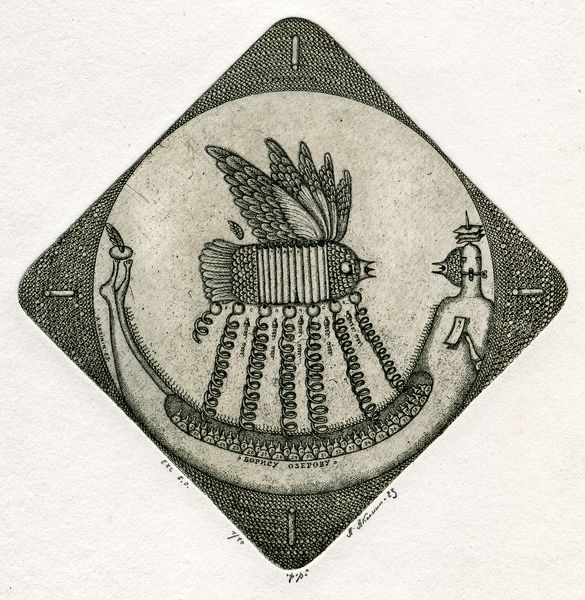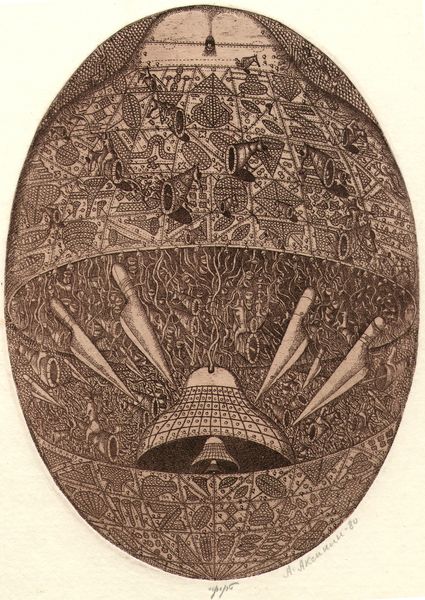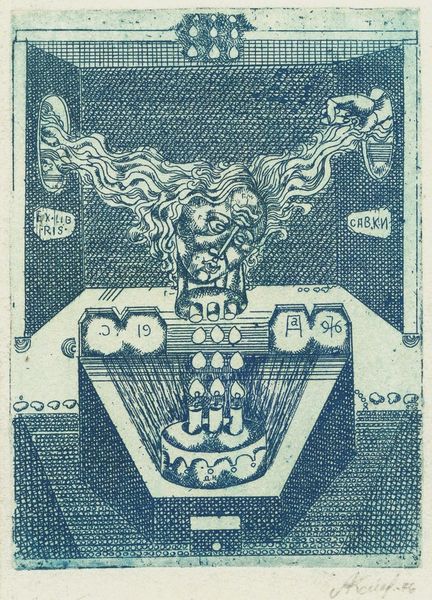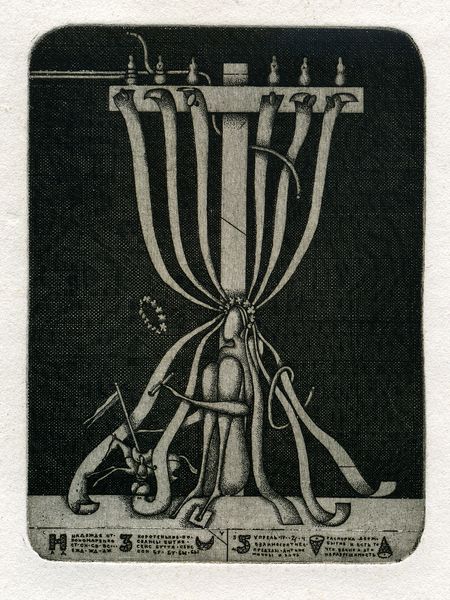
drawing, ink
#
drawing
#
sculpture
#
figuration
#
ink
#
line
#
surrealism
Copyright: Oleksandr Aksinin,Fair Use
Editor: This drawing, "March," created by Oleksandr Aksinin in 1982, is rendered in ink. The figure is just so strange, yet so meticulously detailed. It looks almost like an industrial-era deity, constructed from various components. What’s your interpretation of this work? Curator: Looking at this drawing through a materialist lens, I’m drawn to the meticulous execution using ink – a relatively accessible material. Consider Aksinin’s socio-political context, specifically life in Soviet Ukraine in 1982. Do you think the choice of drawing with such precision might be related to ideas around accessible and forbidden objects under communism? Editor: That's interesting. So you’re suggesting that the meticulous drawing challenges the constraints of what was easily accessible to him at the time? Perhaps it was about reclaiming power through craft. I hadn't considered it that way. The materials as an indication of something much larger! Curator: Precisely. Moreover, the use of surrealist imagery can be viewed as a response to the control of information under authoritarian regimes. These images provide visual codes of protest. Can you see how the layering of these material constraints and creative strategies become politically charged in the making? Editor: I see your point. And the ships, perhaps a longing for places outside the reach of the Iron Curtain? The work itself becomes a testament to resisting the prescribed roles of creative production. Curator: Exactly. By focusing on materials and artistic labor, this artwork highlights both ingenuity and constraints, questioning hierarchies between approved public expression, and the private work of creating art with limited access. Editor: So, in essence, it’s a subtle rebellion conveyed through readily available means. That really enriches my understanding of the work! Curator: Indeed. It reminds us that art is often a direct response to—and a negotiation with—the material and political conditions of its creation.
Comments
No comments
Be the first to comment and join the conversation on the ultimate creative platform.

